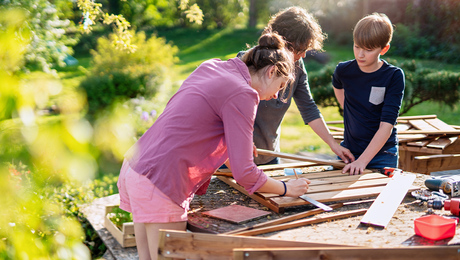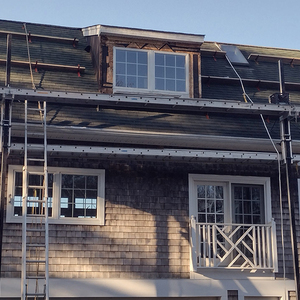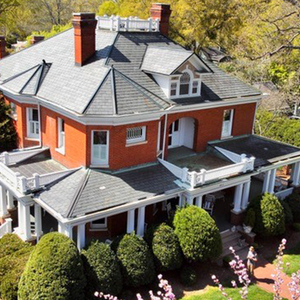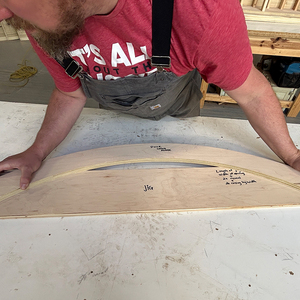Poplar or radiata pine for interior trim
I’m ready to start interior trim on our ~3400 sq.ft. house and had planned on using tulip poplar (L. tulipifera) anywhere the trim might be subject to wear (baseboard, shoe, casings). The quotes I have received for poplar molding and flat S4S 1x stock are more than twice that for radiata pine. Based on my very scientific “thumbnail indentation test”, it doesn’t look like there is that much of a hardness difference between poplar and radiata pine. Anyone out there have experience with radiata pine as interior trim and opinions on durability, paintability, etc? Note for those unfamiliar with radiata pine: it is a newcomer to the US and is plantation grown in S. America and New Zealand. Seems to be making inroads as I have seen it recently in both Lowes and Home Cheapo. Beautifully clear stuff.



















Replies
Anchor, if I am reading you right, we call that stuff (radiata pine) "advantage pine" out West--or at least my lumber yard does. This stuff comes from NZ, is finger jointed, smooth on one side, rough on the other, and primed (nice to cut out just one other step of installation/painting). I also found out that there is a two-priming process; once in NZ and once in the States after overseas shipment.
I'm currently trimming out my 2250 sq ft home and having, what I think is, good luck with the stuff. I'm using a popular top to my trim and another piece of pine, door stop stock, just below that (I've attached a picture to illustrate a door I finished a few days ago).
I haven't seen this advantage pine at home depot or lowes in my area. I get the advantage pine at a quality lumber yard (have to drive 17 miles to get it when there are a half dozen yards right in my backyard), the popular through my door supplier, and the stool and doorstop at HD.
I'm not in the trades per se, so I don't know obviously how others feel about it. A carpenter friend of mine says he uses it with good results.
Thanks for the pic, Wiley and your input, Piffin. That actually is exactly the trim syle I will use, but with plinth blocks at the bottom. The radiata pine I have seen here in North Carolina is S4S and that is what I've obtained quotes for. I have never seen a knot in it. If I'm not mistaken it is classified as a "yellow pine", which tends to be harder than the "white pines'. I first encountered it about a year ago when I bought 1x6 v-groove t&g for my soffits at the lumber yard. It looked different enough from what I had been using (Southern yellow pine, extremely common around here) that I asked what the heck it was.
Yeah Anchor, I had thought about going with plinth blocks, but wanted to finish this job before hell freezes over (it's been almost a year and a half now)...and the plinth blocks are a bit more traditional in "craftsman" style. I read up on the latter and guess it came out of the victorian style, but far less ornate obviously. I'm finding there's a lot of variance even within the craftsman style as far as what one can do--relief, widths, additional accents, etc.
The heading cap piece of popular which was a special order ran me about $2.87/ linear foot. I got hit with the $400 plus total and stood back; still will need more to finish the job I suspect.
I don't find Radiata available to me as mill stock. I get doors made of it. I have Eastern White pine around here and can get poplar for aprox the same price.
The poplar is my choice. Ther are fewer knots and it mills well. Knots will dull cutter knives faster. The pine has more resins to be sealed in with primer/sealer by the painters.
They are about the same hardness. The grain of pine is slightly more likely to telegraph through the paint job. I think Radiata is slightly harder than white pine. If I could get clear radiata for half the price of poplar, I would have a decision to make, but at similar costs, the poiplar wins, hands down.
Excellence is its own reward!
I used radiata pine on some trim in the house I live in. Seemed pretty nice to me.
It was fairly straight, virtually no knots, took stain well, and looks nice in place.
I'd use it again in a heartbeat. Wish I had some digital pics of the stuff.
Men are Like mascara.
They usually run at the first sign of emotion.
I am of the impression that radiata pine is one of those fast growing plantation trees.
I would think poplar would more stable as well as easier to mill.
If you want a more durable paint grade wood, check out Soft Maple, it is only soft relative to hard maple and around here (NY-Penn border) is quite affordable.Mr T
Do not try this at home!
I am an Experienced Professional!
I'll concur on your "soft" maple recommendation. I've used it for many years on everything from drawer sides to casing stock when requirements allow. I get mine from the local sawmill here for far less than poplar.
The downsides are that if stained directly, it blotches badly and depending on grain configuration, it sometimes chips when milling if your blades and/or knives aren't in a reasonably sharp condition. Then again, most any wood can respond the same way under the same conditions.
When coloring soft maple (or poplar), I use a clear seal coat first and then follow with sprayed color coats and top off with another (or two) clear coats. This produces a very even, controllable and predictable attractive coloration, as it will with any blotch prone wood.
Knowledge is power, but only if applied in a timely fashion.
believe it or not, Maple is almost impoossibler to buy in some parts of this wonderful country.
Radiata does have a fairly open wide grain but it seems stable to me and I tenmd to doubt they would be using it for doors if it were not a stable species..
Excellence is its own reward!
I vote for the popular. I have had great success with painting and staining it. Fell in love with it when I built my first gun cabinet in junior high! I have stained and installed it in historic refurbishments and in upscale luxury homes. Everyone with more money than brains kept telling their friends it was cherry or mahogany! LOL (I did tell them the truth, though). I would prefer Red Oak or Ipe if I wanted a durable component. I do prefer the natural look of a wood but stain on popular is really beautiful and fairly easy, not to mention cost effective. As for painted trim though, I guess I'm a snob cause I'd never used pine except for framing. Even, that is something I am moving away from in favor of engineered lumber and/or steel framing. Maybe if homebuilding moves to all steel framing the trees will get a good chance to grow and provide us with some awesome lumber like by gone days.
Most of the R. pine doors I see are veneered.
Any wood with 3/8" growth rings is not going to be stable long term.
I agree that getting hardwood in ME. sucks!!Mr T
Do not try this at home!
I am an Experienced Professional!
You're right about the veneer. I had forgotten that.
I run down to N Hampshire for my hardwoods so it isn't all that hard here - I was thinking of when I was in Colorado that hardwoods were unheard of - except for the bank..
Excellence is its own reward!